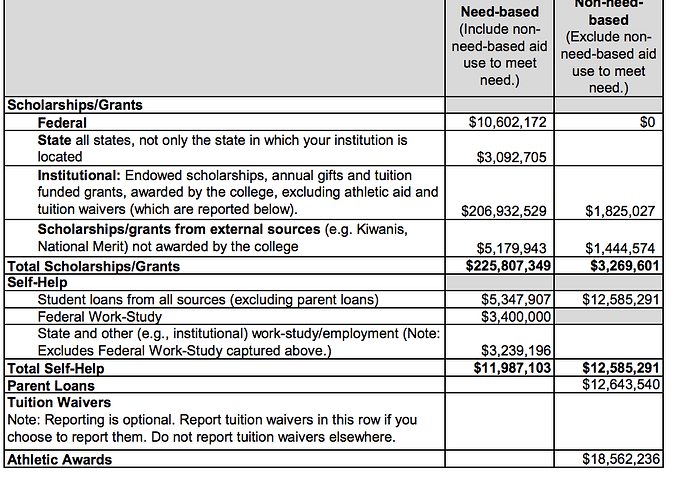The whole article is quite interesting to read, and indeed to outline.
Somewhat buried in the middle is an extended, informative discussion of why administrative costs have risen relative to faculty costs. They attribute it to three main drivers.
One is increased regulatory compliance, examples being “the Clery Act, which requires campuses to report their crime activity; new Title IX regulations that govern the handling of sexual assault; and Family Educational Rights and Privacy Act (FERPA) requirements for providing educational records. . . . rules on teacher preparation programs[,] Net Price Calculator requirements [and] specific regulations for FAFSA verification. . . . [in the wake of the 2007 Virginia Tech shooting] case management services [and] threat assessment teams.”
The second is what they call the “arms race”, measures to attract potential students with more facilities, more study abroad programs, more extracurricular options, and so on.
The third is other expectations for increased services, like career assistance, mental health services, internship guidance, and so on. In this context, they note that more students entering today are first-generation, more are receiving Pell Grants, and more are international students, who may have greater need for such services. They also note that the role of performing these functions has increasingly been shifted from faculty to administrators.
That’s all very interesting, and obviously raises the question of whether we really we want to simply eliminate all this to reduce administrative costs. Indeed, I think there really isn’t a hard line between the second category “arms race” factors and the first and third factors. Many families care about issues like campus crime, sexual assaults, shooting threats, and mental health. Many families directly benefit from dedicated internship and career services. So even if suddenly none of this was required by regulation, I am not sure we can assume colleges would simply stop doing it.
OK, then wrapping this informative discussion there are basically three additional things: a discussion of an audit that criticized the Office of the President in the Cal system, a theory from an economics professor at Centre College in Kentucky that higher prices are a quality signal, and some rhetoric from a public-facing libertarian law professor using phrases like “administrative bloat” and “bureaucrats”.
I do think the discussion of the Office of the President case was useful. It wasn’t a lot of money in the greater scheme, but the basic point was that particular office seemed to be spending more than other similar state offices, and that states should audit state universities to monitor for such issues. That probably won’t do a lot to address overall higher education costs, but it is a fair point.
The theoretical point about price signaling quality is potentially interesting, but prima facie it seems to run into the problem that “full” cost of attendance and net cost of attendance are two different things. And from my perspective, while it is plausible that “full” cost of attendance amounts are being used in part for quality signaling (and I note at many private colleges, even “full” cost of attendance is heavily subsidized by other revenue sources, giving them a lot of freedom to determine exactly where to set that number), it also seems obvious to me there is a lot of more or less normal price competition when it comes to net cost of attendance. Like, colleges offer competing need-based aid, merit-based aid, and so on. So I am not sure this theory really applies to the price that matters, namely the price actually paid, namely net cost of attendance.
And then finally, I personally put no weight at all on the rhetoric used by the libertarian law professor. Not to be overly cynical, but that particular person has a well-known public brand, and while I am not suggesting he is insincere, getting some juicy quotes from him for an article is not really meaningful to me.


